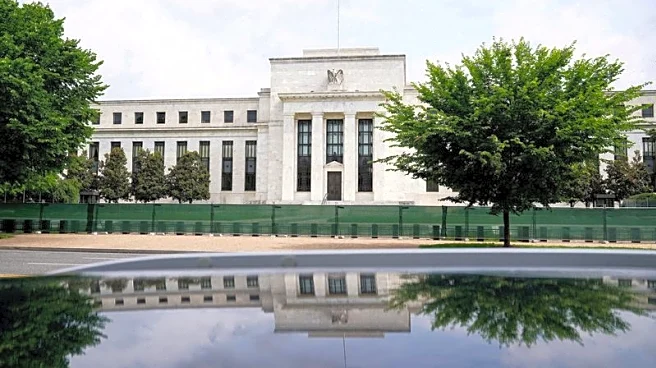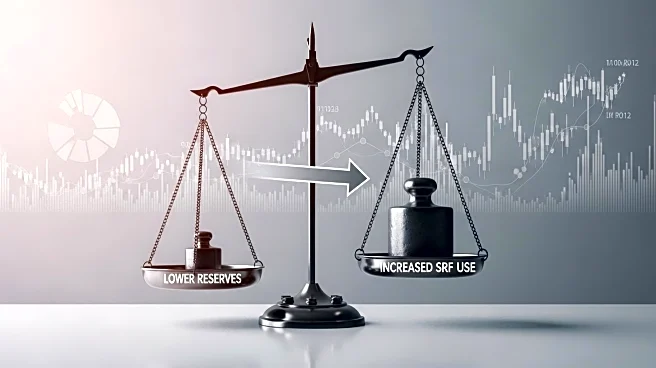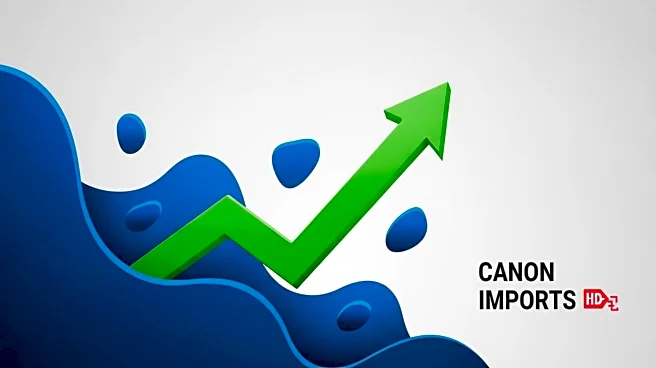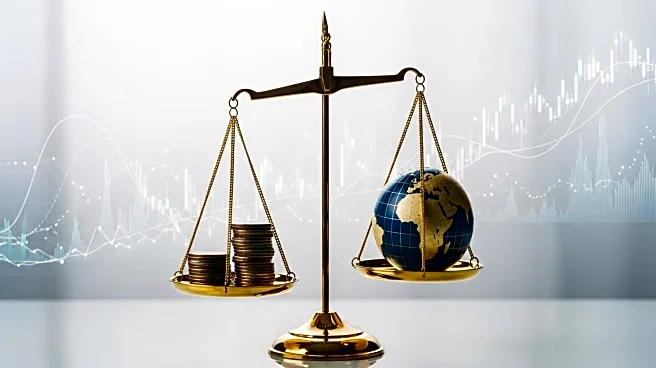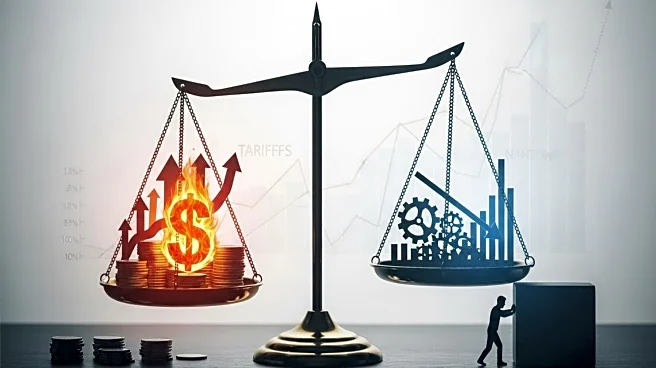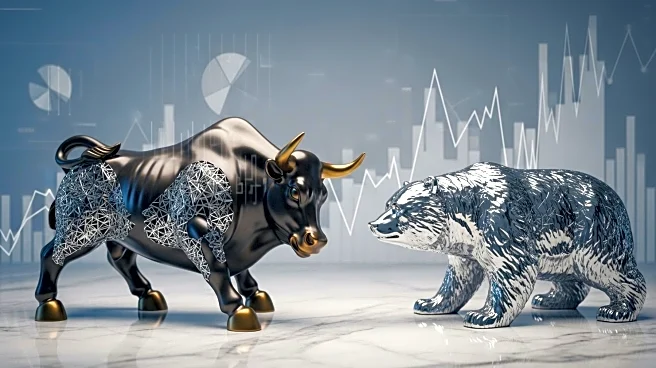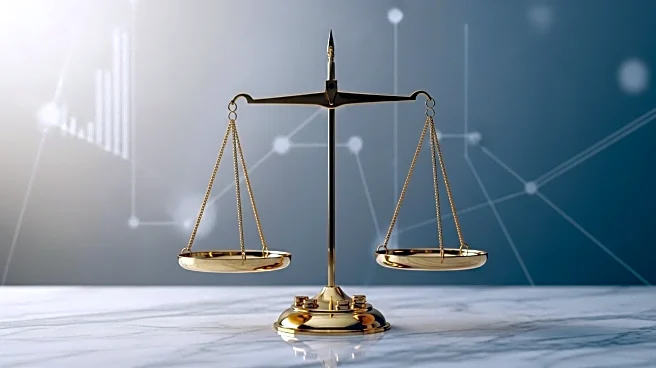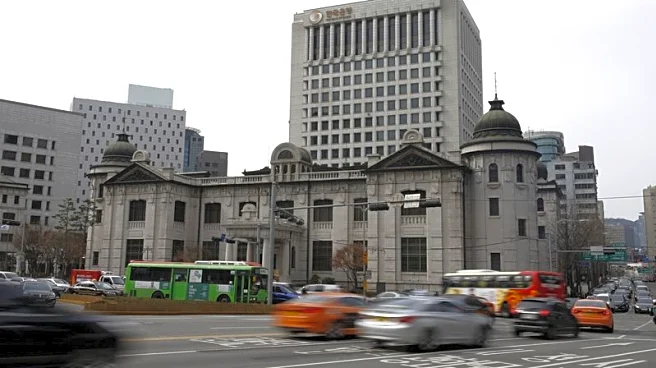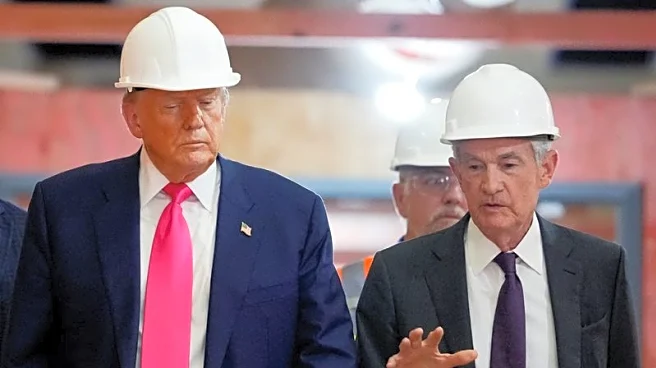What is the story about?
What's Happening?
The U.S. economy's growth rate for the second quarter of 2025 has been revised upward to 3.3%, according to the Commerce Department. This adjustment reflects stronger-than-expected business investment in structures, equipment, and intellectual property, alongside consumer spending. The revision follows a first-quarter GDP decline, driven by a surge in imports ahead of new tariffs. The second quarter saw a reversal, with imports falling sharply, contributing significantly to GDP growth. Despite the positive revision, concerns persist about the economy's underlying strength, with weak private-sector demand outside of AI-related investments.
Why It's Important?
The revised GDP figures highlight the impact of AI investment in masking broader economic weaknesses. While the economy shows signs of recovery, the reliance on AI-related growth raises questions about sustainability. The sharp decline in imports following tariff-induced stockpiling underscores the volatility in trade dynamics. The economic outlook remains uncertain, with potential implications for monetary policy as the Federal Reserve considers interest rate adjustments. The focus on AI investment reflects broader trends in technological advancement and its role in economic resilience.
What's Next?
The U.S. economy may face challenges in maintaining growth momentum as the effects of tariffs and trade dynamics continue to unfold. The Federal Reserve is likely to monitor economic indicators closely, with potential interest rate cuts on the horizon. Businesses may continue to invest in AI and technology to offset broader economic weaknesses. Consumer spending patterns and private-sector demand will be critical in shaping future growth prospects. Policymakers and economists will need to address these challenges to sustain economic momentum.
Beyond the Headlines
The emphasis on AI investment highlights the intersection of technology and economic policy. Ethical considerations arise as technological advancements impact labor markets and economic disparities. The volatility in trade dynamics underscores the complexities of global economic interactions. Long-term shifts in business strategies and consumer behavior may emerge as stakeholders adapt to changing economic conditions. The interplay between innovation, policy, and economic growth will continue to shape the U.S. economic landscape.
AI Generated Content
Do you find this article useful?


